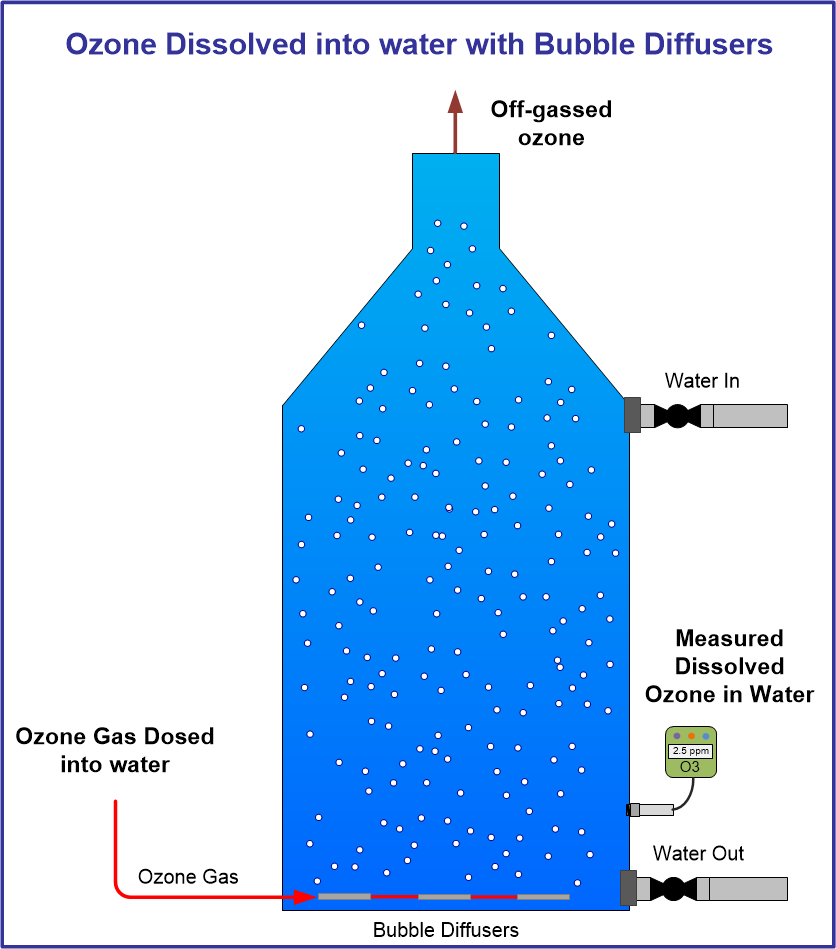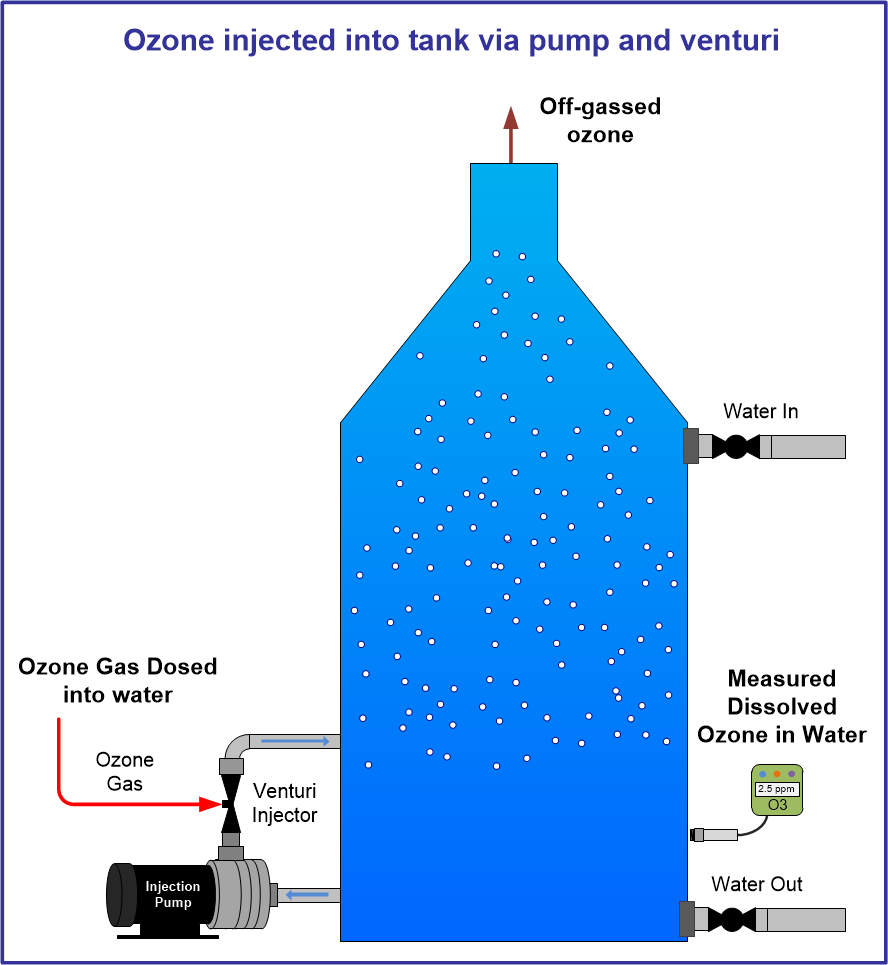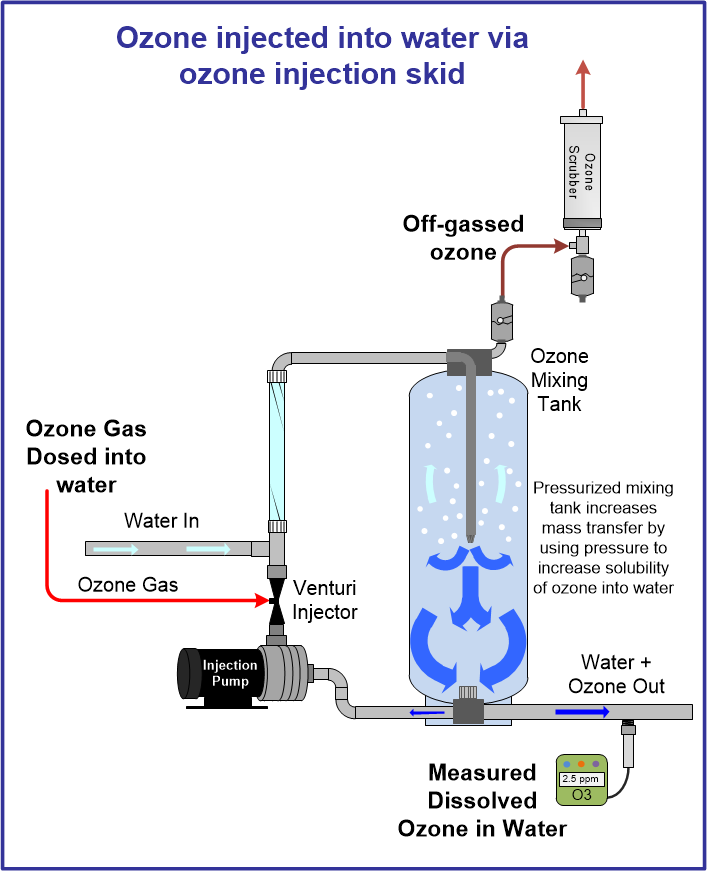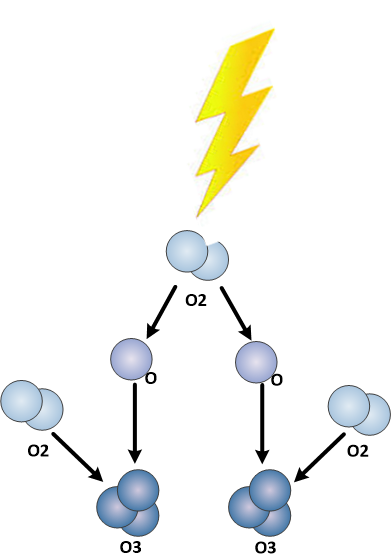Ozone Dosage vs Dissolved Ozone
Ozone dosage = the amount of ozone applied to the water
Dissolved ozone = the amount of ozone measured in the water
Ozone dosage into water does not equal dissolved ozone in water. Ozone is generated as gas and must be dissolved into water in many applications. As ozone is only partially soluble in water mechanical mixing equipment is necessary to dissolve ozone into water efficiently. There are no systems that will achieve 100% mass transfer of ozone gas into water, therefore the dissolved ozone levels will always be lower than the applied ozone, or ozone dosage rate.
Final measured dissolved ozone levels in water will be affected by water quality contamination, water temperature, and the efficiency of your mechanical mixing equipment used to dissolve ozone into water.
To achieve a specific, targeted dissolved ozone level the oxidizable compounds in the water must be overcome along with any other ozone scavenging conditions, also keep in mind the ozone half-life may come into play depending upon the duration of time used to achieve your target dissolved ozone level.
The quantity of ozone you attempt to put into the water will always exceed the amount of ozone actually absorbed into the solution.
Due to the low solubility rate of ozone gas into a liquid and due to system inefficiencies, a portion of the ozone off-gases without being absorbed into the water. This off-gassed ozone must then be vented outside or destroyed with an ozone destruct unit.
The ratio of ozone gas dosage to the final dissolved level is commonly referred to as the mass transfer rate. This refers to the amount of ozone gas that was measured as dissolved vs the ozone dosage rate. This is commonly referred to as a percentage. Such as a 90% mass transfer rate of ozone would indicate that 90% of the ozone dosage, 1ppm for example, would result in 0.9 ppm of ozone measured in water.
Different methods of ozone injection will achieve different dissolved ozone levels into water due to different efficiencies and mass transfer of ozone into water. A few examples of these options are shown in the images below:
|
Ozone dissolved with a bubble diffuser is simple and cost-effective. However, in most cases offers the lowest mass transfer efficiency of any method used and therefore the greatest difference between ozone dosage and measured dissolved ozone in water. |
Ozone dissolved with a pump and venturi injector is simple to set-up and fairly efficient. This will mix water in the tank well and achieve a higher mass transfer of ozone into water than a typical bubble diffuser due to the forceful mixing action of a venturi. |
Ozone dissolved into water with an ozone injection skid. In this application, a dedicated, pressurized ozone mixing tank can be used to increase mass transfer of ozone into water as ozone solubility increases as water pressure increases. A system like this will have the lowest difference between ozone gas dosed into water and resulting measured dissolved ozone in water. |
Additional Information Links:
Ozone Dosage vs Dissolved Ozone
Dissolve Ozone into water with Bubble Diffuser
Dissolve Ozone into water with Venturi Injector
Dissolve ozone into water with Static Mixer
Compare Venturi Injector and Bubble Diffusers
How to read an Injector Performance Chart
Additional Ozone Solubility Information















